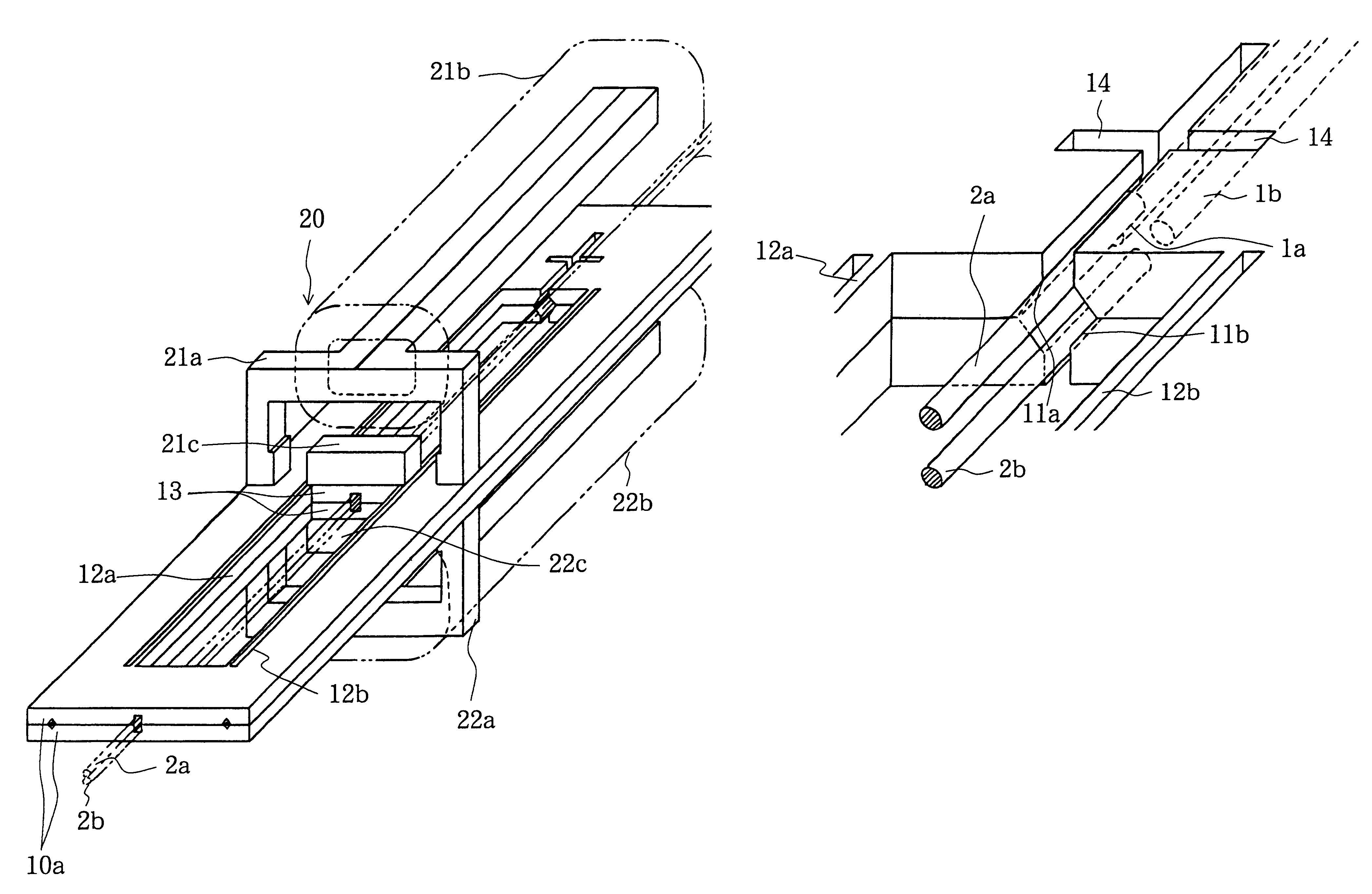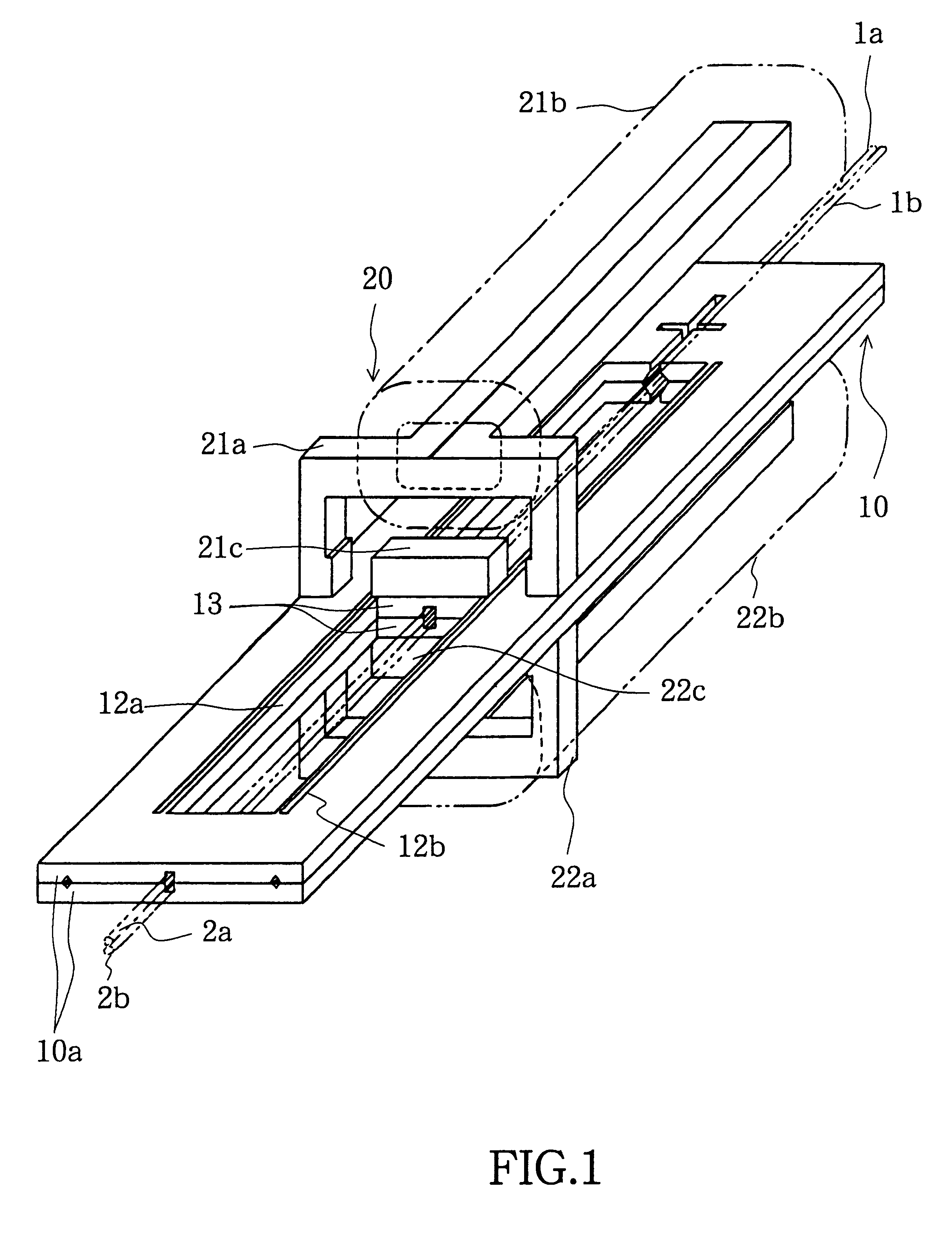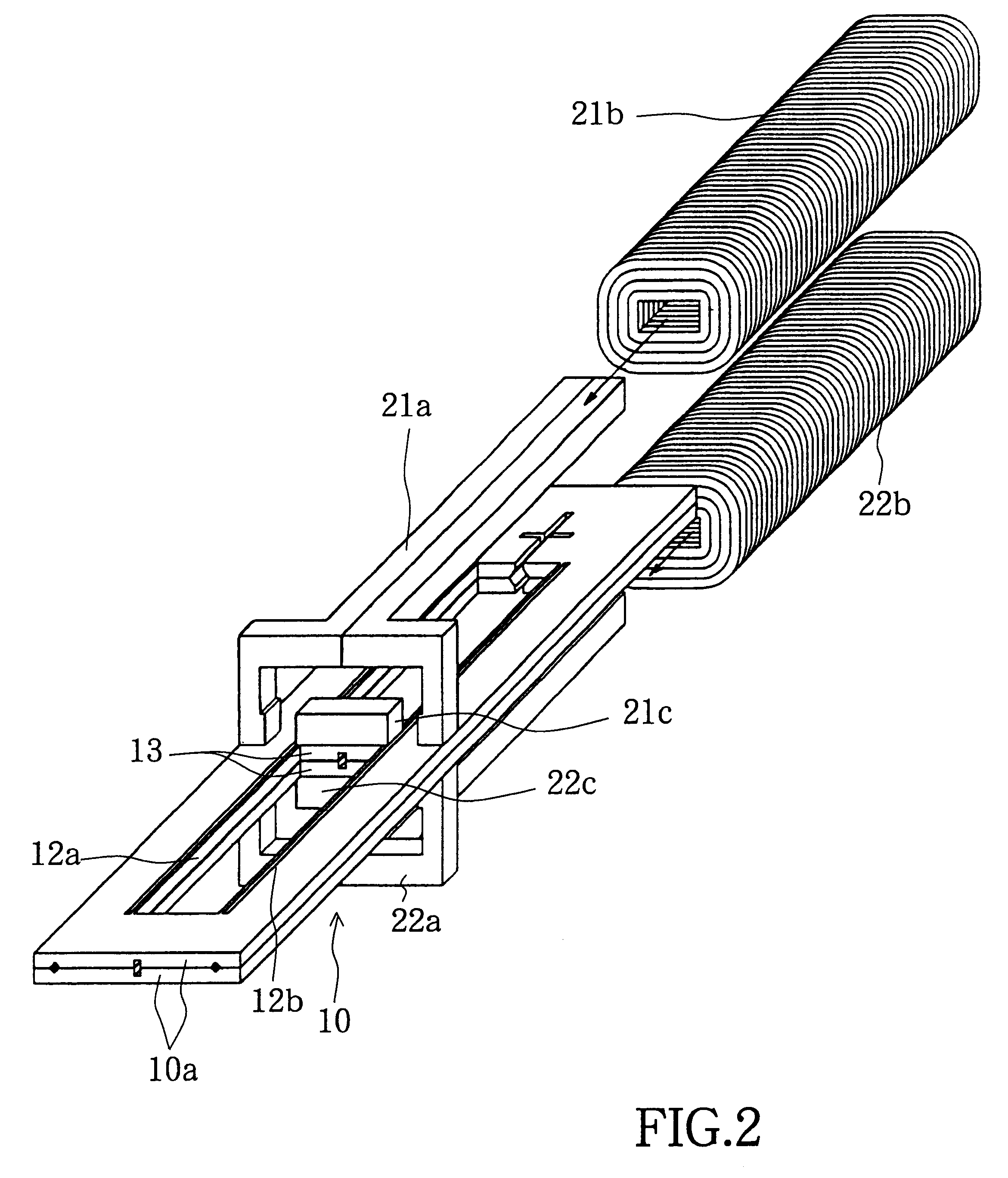Optical switch
a technology of optical switches and mirror finishes, applied in the field of optical switches, can solve the problems of large optical loss, unsuitable mass production of optical switches, poor yield of mirror finishes,
- Summary
- Abstract
- Description
- Claims
- Application Information
AI Technical Summary
Benefits of technology
Problems solved by technology
Method used
Image
Examples
first embodiment
FIG. 1 is an enlarged perspective view showing the configuration of a first embodiment of this invention, and FIG. 2 is an enlarged exploded perspective view of the same. This first embodiment comprises a pair of fixed optical fibers 1a and 1b, a pair of movable optical fibers 2a and 2b, support member 10 for supporting the end portions of these fixed optical fibers and movable optical fibers, and drive mechanism 20 mounted on this support member and serving to produce a mechanical displacement of the end portions of the pair of movable optical fibers 2a and 2b.
FIG. 3 is an enlarged perspective view showing the shape of the support member in the first embodiment; FIG. 4 is an enlarged perspective view of portion A in FIG. 3 and showing optical fibers mounted in the support member in the first embodiment; and FIG. 5 is an enlarged interior plan view of FIG. 4 and showing optical fibers mounted in the support member in the first embodiment.
A pair of V-grooves 11a and 11b arranged with...
second embodiment
This second embodiment comprises a pair of fixed optical fibers 1a and 1b, a pair of movable optical fibers 2a and 2b, support member 10 for supporting the end portions of these fixed optical fibers and movable optical fibers, and drive mechanism 30 mounted on this support member and serving to produce a mechanical displacement of the end portions of the pair of movable optical fibers 2a and 2b.
As in the first embodiment, support member 10 is formed by sticking together two frames 10a. The pair of fixed optical fibers 1a and 1b and the pair of movable optical fibers 2a and 2b are fixed in the same manner as in the first embodiment.
Drive mechanism 30 comprises first electromagnetic means and second electromagnetic means. The first electromagnetic means comprises first core 31a, first coil 31b, first permanent magnet 31c fixed to linking portion 13 of upper frame 10a, and first covering plate 31d for covering the top of support member 10. Guiding groove 33 is formed in first covering ...
third embodiment
FIG. 31 is an enlarged perspective view showing the configuration of a third embodiment of this invention. This third embodiment comprises a pair of fixed optical fibers 1a and 1b, a pair of movable optical fibers 2a and 2b, support member 10 for supporting the end portions of these fixed optical fibers and movable optical fibers, and drive mechanism 40 mounted on this support member and serving to produce a mechanical displacement of the end portions of the pair of movable optical fibers 2a and 2b. As in the first embodiment, support member 10 is formed by sticking together two frames 10a. The pair of fixed optical fibers 1a and 1b and the pair of movable optical fibers 2a and 2b are fixed in the same manner as in the first embodiment.
Drive mechanism 40 comprises first electromagnetic means and second electromagnetic means. The first electromagnetic means comprises first core 41a, first coil 41b, and first permanent magnet 41c fixed to linking portion 13 of upper frame 10a. The sec...
PUM
 Login to View More
Login to View More Abstract
Description
Claims
Application Information
 Login to View More
Login to View More - R&D
- Intellectual Property
- Life Sciences
- Materials
- Tech Scout
- Unparalleled Data Quality
- Higher Quality Content
- 60% Fewer Hallucinations
Browse by: Latest US Patents, China's latest patents, Technical Efficacy Thesaurus, Application Domain, Technology Topic, Popular Technical Reports.
© 2025 PatSnap. All rights reserved.Legal|Privacy policy|Modern Slavery Act Transparency Statement|Sitemap|About US| Contact US: help@patsnap.com



